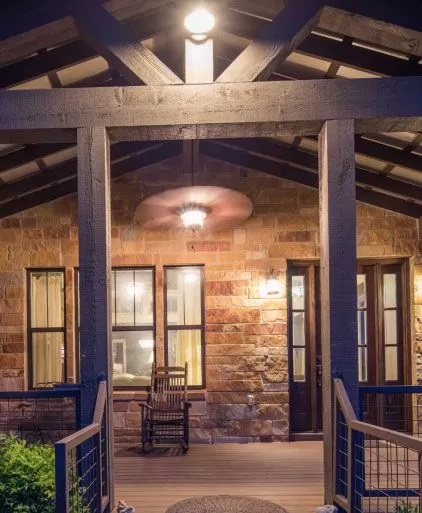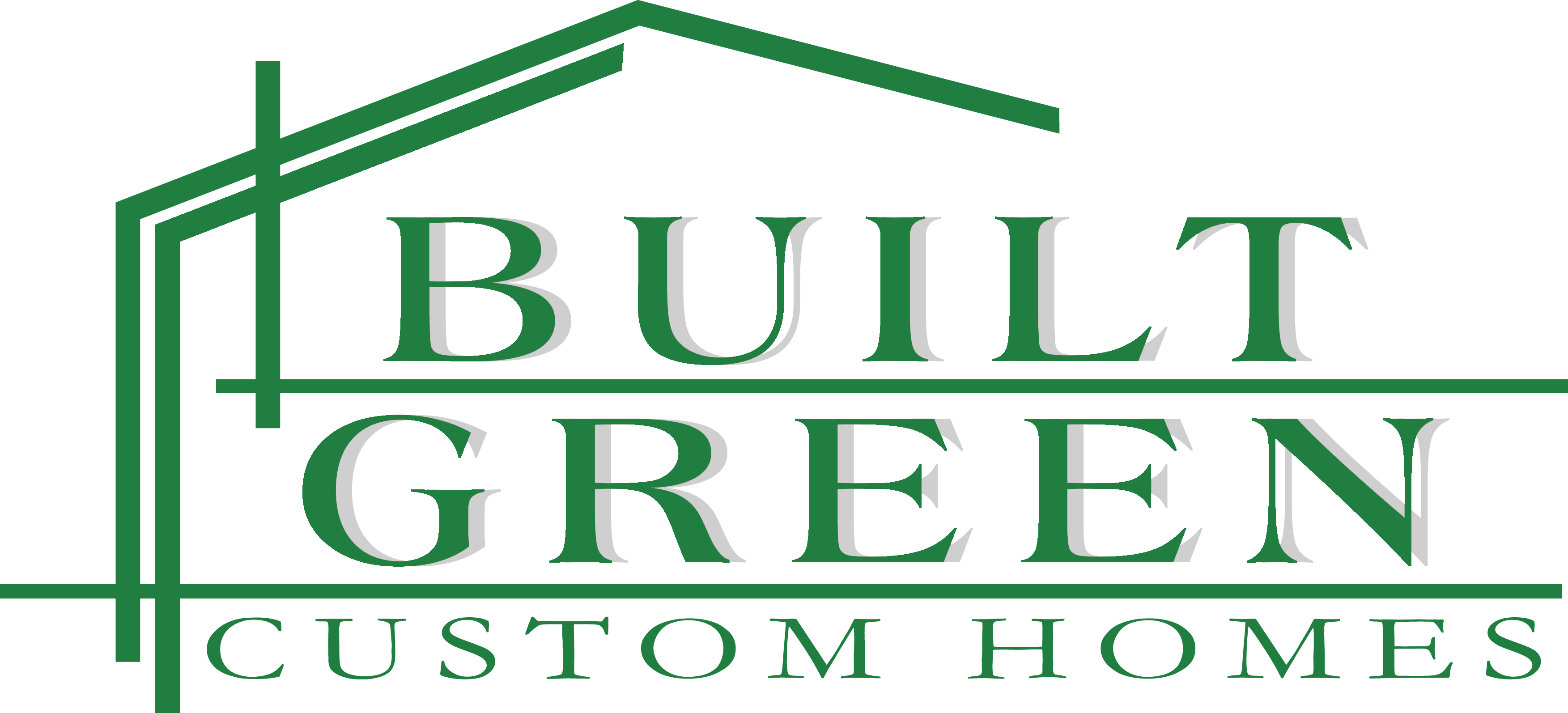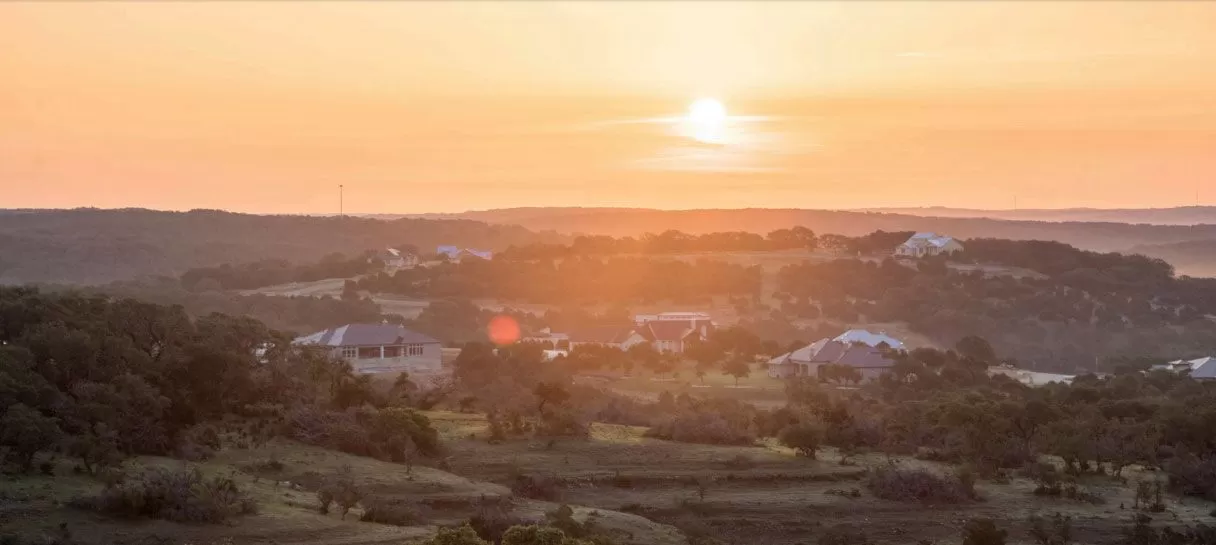
As building consultants for custom homes, Built Green Custom Homes (BGCH) helps you survive and thrive in building your new custom home on your own building site. Want to avoid a serious mistake in choosing the site for your new home? Before you begin to shop, consider your needs and wants. It’s a good idea to make a list of your “must haves”, and a separate list of your wants and dreams. Be realistic! Few of us can afford all the dreams we might have for a new home. This special report can assist you in making a wise decision in choosing the site for your new dream home.
Working Budget For A Custom Home
The very first step to your new home is to set a tentative budget for the entire project. Contact BGCH for a referral to an experienced lender who can help you set a budget based on either the total project cost or desired monthly payment. Knowing where you are financially will give you more confidence heading into the project. Be realistic. Central Texas has experienced major inflation in property values and construction costs since 2012. Building your new home can cost more than you expect. Ask for the maximum in loan qualification. You do not necessarily have to use the maximum, but you do need to know your options.
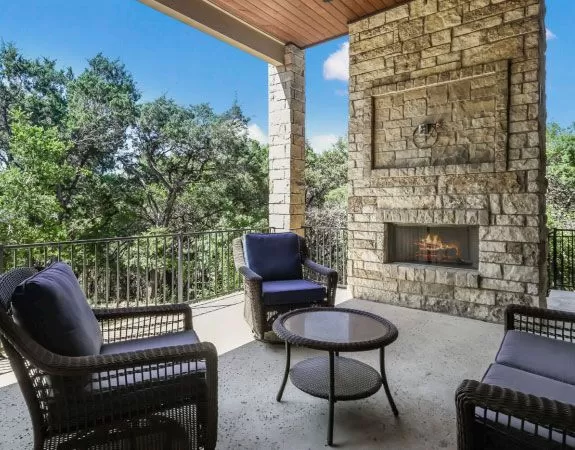
Once you have a tentative budget, begin to think about new home construction cost and land cost. A common mistake is to assume that a custom home can be built for a lower cost than comparable production homes. Major home builders have cut their costs to the bone, and it’s highly unlikely that you can build a custom home for a lower cost per square foot than they can. In addition, if you plan to do a significant amount of the work, you cannot just qualify for the amount of money that you think you will need. Instead, the bank insists that you qualify for what a typical builder’s cost would be for the home. You do not have to use all the funds, but the bank insists that you have them available in case your plans don’t work out.
Another typical mistake is to get excited about a dream property, and invest too much in the land, and then not be able to afford the house you want. So back into the land budget by first getting local cost figures on the size and type of home you want to build. Standard home builders can usually tell you what they charge for a given model home. That at least gives you a beginning amount per square foot (sf). For example, if your tentative budget is $500,000 for the project, and you want to build a 3,000 sf home, and local costs are $150 per sf for the type of home you want, then you are looking at $450,000 for construction, leaving $50,000 for land. If that’s too little for the land, maybe you should take another look at your home desires to see if costs or size can be reduced. BGCH offers a free cost estimate, to give you an idea of current building costs in Central Texas. Contact us today for more information.
How much should I spend on land? There is no good answer to that question. Rather, it totally depends on the lifestyle you want. If you want a large tract of land or if you want a lake front property, then you will have to allocate a larger percentage of your budget to land.
General Location For Your Custom Built Home
Consider your dream lifestyle. Are you looking for the quiet of the country, the convenience of the suburbs, or the night life of downtown? A new custom home is all about lifestyle. Where do you prefer to live?
Several key items are important:
- Are you commuting to work?
- What is the maximum drive time?
- What is the distance to shopping, church,
hospital, restaurants, or airport? - Or how about distance to golf course, river,
or lake or hunting lease? - Distance to friends and family?
- Are you looking for the quiet of the country?
- How close do you want to be to the nearest
neighbor? - Are you looking for a distant view?
- Do you prefer a view of the Hill Country or
the city? - Do you want farm animals on your new
place? - What about noise from a highway, train or
airport?
One estate subdivision near New Braunfels is next door to an outdoor shooting range. Some prospective owners love it, as they feel more secure. Others can’t tolerate the noise.
- What about the area around the home site?
Do you prefer unrestricted land, where no one can tell you what you can or cannot do with your property, even if a few of the neighbors don’t keep their place as neat and clean as you prefer? Do you mind a few mobile homes scattered around the neighborhood or the possibility of a trailer park being developed on the nearby farm? Or do you prefer zoning or deed restrictions where everyone is held to a higher standard, in order to preserve property values? Unrestricted property will give you great latitude in developing your property. However, areas that are unrestricted may offer challenges when it comes time to getting the construction loan for your new home. Mobile homes negatively affect the value of traditional homes nearby. This could cause the construction loan appraisal of your new home and later the mortgage appraisal to be less than the cost of building your new home, meaning you have to bring more cash to the closing table. This would put you upside down financially in your home. Does the site currently have a mobile home on it? Mortgage companies will not issue a final mortgage on a newly built home until the mobile home is removed. Other nearby situations such as industrial sites, landfills, junk yards or pig farms could also negatively affect the appraisal.
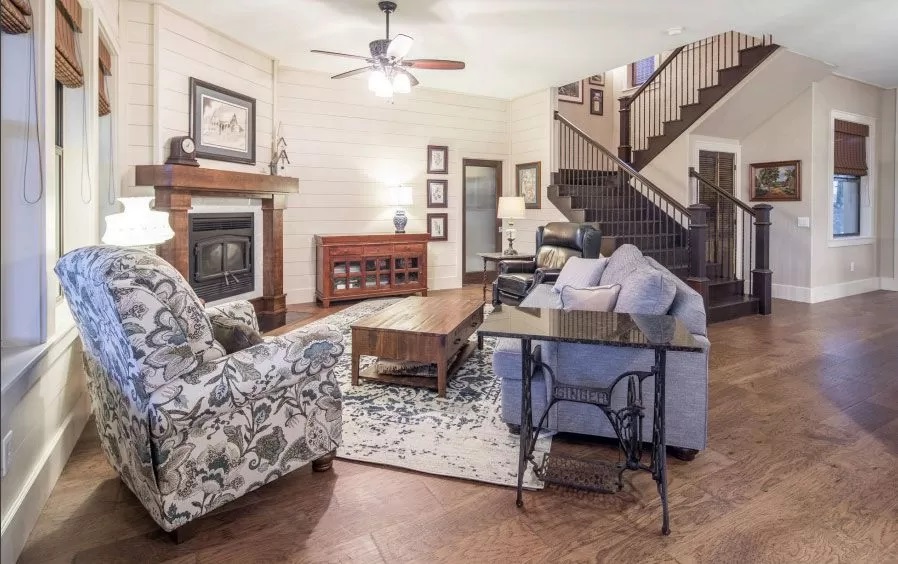
- Several key items are important:
Years ago the Texas local government did not mandate that developers build the roads to specific standards, so roads can be substandard, with no ditches, and poor base or paving materials. If a road is substandard, the county will refuse to accept the road, and thus will not maintain it. If the road is private, property owners will have to work together to maintain the road, at their own expense. Is it gravel or paved? If gravel, it will negatively affect the value of your new home, as it will require more maintenance and will leave cars dusty during dry weather.
- Where will your mailbox be?
In this digital age, you may not be as concerned about snail mail as you used to be. The post office is now delivering mail to centralized boxes in newer subdivisions, so unless the neighbors of your prospective property all have mailboxes at their property, expect to drive to a central mail box location to retrieve your mail. This is common in subdivisions developed since about 2000.
- Is the site inside the city limits or outside?
Just because a site has the mailing address of a city does not mean that it is inside the city limits. Contact BGCH if you need assistance on determining this. Building inside the city limits generally means better services, but higher costs and higher taxes, as well as more difficulties in building. Some cities are not a problem, but many are. They can make it much more difficult and costly to build. The permitting process for major cities can be a nightmare. BGCH can refer you to permit expeditors, who know the process and can save you time and headaches. In addition, more than a few contractors refuse to work inside the city limits of Austin, for example, meaning the remaining contractors can charge more for their services.
- How close is the site to emergency services, such as police, fire and ambulance?
Insurance rates are affected by the distance to fire hydrants or 24-hour manned fire stations. If you need emergency assistance, how long will it take help to arrive?
Recently a stone quarry was proposed for a large ranch in Comal County. Property owners nearby are fighting the proposal. Owners are concerned that blasting, dust and heavy truck traffic will affect their lifestyle.
Deed restrictions (private zoning), known as Codes, Covenants and Restrictions (CCR), are legally recorded with the county and available from the county at a nominal charge. They may also be available on the subdivision website or from the listing real estate agent. Verify that you have the correct restrictions for the particular section of your subdivision, as developers often make the restrictions stiffer in sections that are the last to be developed. In addition to CCR’s, some subdivisions use Architectural Guidelines to further define what can and cannot be done with the property. Architectural Guidelines are not recorded with the county, and can be changed by the Board of Directors at any time. Read both before the option period expires. If you prefer deed restrictions, how tight should they be? Some properties are highly restricted, limiting the size, number, use and construction of improvements, while at the same time requiring a minimum size for improvements. Many do not allow a business in the home, especially any business that involves additional traffic, nor do they allow business signs to be posted on your property.
- If there are restrictions, are they still valid, or enforced?
Many older established subdivisions no longer have a functional property owner/home owner association (POA/HOA) or an Architectural Control Committee (ACC). Some subdivisions have allowed their deed restrictions to expire. Other subdivisions are run by folks who think they are God’s gift to property owners, and such tyrants can make your life miserable. Will the POA/HOA even let you build? In one subdivision near Austin, the ACC makes building extremely difficult. Numerous owners have thrown up their hands and walked away from the project, eventually selling their property. Does the subdivision require builders be approved by the subdivision? Will the ACC approve an owner builder consulting company such as BGCH to assist you in building your new home? Some subdivisions only allow “approved” builders, while others specifically prohibit owner builder consulting companies.
- What are the annual dues for the subdivision?
Deed restricted subdivisions generally charge dues to maintain amenities such as pools and common areas and to pay for professional management. Do you prefer the security of a gated subdivision? (Be aware that the “security” of a gated subdivision can be deceiving. It’s easy for most anyone to park down the street from a gate, and follow another car into the gated area.) Annual subdivision dues are generally higher for gated areas than for those that are not gated. The main reason is that, for gated subdivisions, the streets are owned and maintained by the property owners, and are not maintained by the city or county. Some subdivisions maintain guards at the entrance, and dues may be significant.
One last consideration regarding the building site is flood plain. Central Texas is subject to massive floods, and the weather does not read the flood plain maps. Every few years Central Texas experiences a disastrous flood, with water inundating areas not in the official flood
- Will the property accommodate the size of the home you want to build? Are there easements that restrict where you can build?
There can be utility easements, access easements, and drainage easements that prevent you from locating any buildings in the easement area. What are the building set-back lines? Will you have enough room to build the home of your dreams the way you want it? If building set-backs are a problem, might the ACC grant a variance? Many estate subdivisions require that the garage face the side or rear of the property, not the street. If so, you will need a minimum of 30’ on the garage side of the home, to enable you to drive your vehicles into and out of your garage. Are there any height restrictions? One city near Austin stipulates that the peak of the roof can be no higher than 18’ above the highest natural grade of the property. It is becoming more common for subdivisions to limit the height of the home to 35’. Your real estate professional should be able to assist you in answering these questions.
plain. Flood plain maps may be found online, and all counties in Texas maintain flood plain maps. Your real estate professional should be able to help you. If the property was developed in recent years, flood plains should be shown on the plat, but the flood plain may have changed. If there is any question, check the current flood maps at the county records office. If any part of the foundation will be located inside the 100-year flood plain, you will need at additional expense an elevation survey to determine base flood elevation. This shows the minimum height of your finished foundation and some other improvements and is required by the county in order to obtain the building permit and to purchase flood insurance. Raising the foundation height will add expense to your building budget. Flood insurance will add to your monthly payment. The lowest flood insurance cost is achieved by building the foundation 3’ above the base flood elevation. If you want to build in a low area, even if it is not in a flood plain, consider raising your home to minimize potential flooding damage
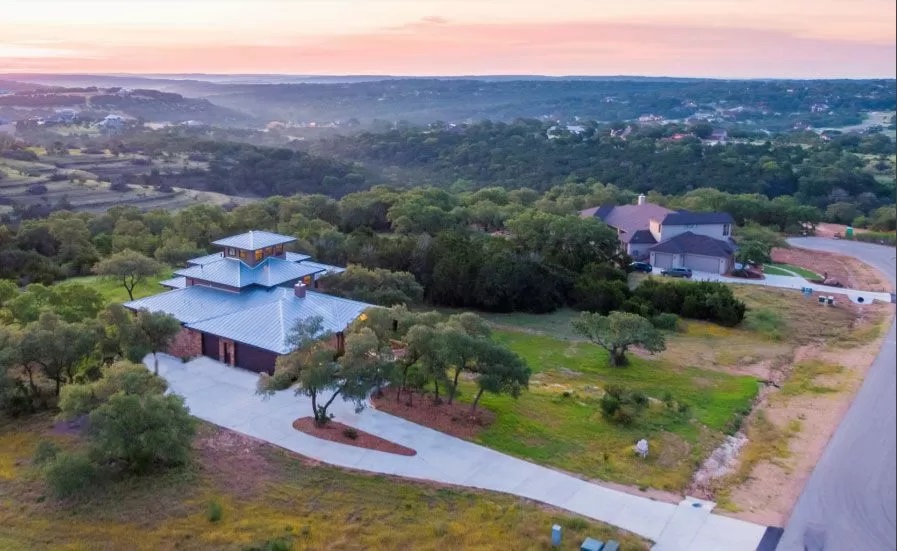
Custom Home Site Costs
Developing your new home site can take a chunk out of your budget. As you contemplate a property, contact us for a free guidance to help you budget for site development costs.
- Do trees need to be cleared?
What would a contractor charge to do that? Are you thinking of clearing the trees yourself? How will you dispose of the trees? Burn? Does the city or subdivision allow burning? Is there a burn ban due to drought? Or should you have the trees hauled to a recycling site? Or should you have the trees chipped/ground and leave the mulch on the property? Where the foundation of a future building is located, it is recommended that tree roots be completely removed and, for holes remaining, that the select fill for replacement soil be properly compacted.
- Is there a slope?
A level building site is nearly always preferable over a slope. Foundations in Central Texas are generally slab-on-grade construction. Slopes can add greatly to the foundation cost. Contact BGCH for a free site assessment. We can give you an idea of the amount of slope over the length of the foundation, as well as an educated estimate of foundation cost. Don’t guess at the slope. Your eyes will fool you. One client thought he had a drop of 1 or 2 feet across the slope. He was astounded to discover that it was a 6’ drop. He had to modify his plan, to avoid the cost of building a ramp up to his garage. One more caution: older subdivisions in Central Texas probably have been picked over for ease-of-construction lots. Often, the first homes to be built are on the highest, flattest lots. Many of the remaining lots may have extreme slope which adds to foundation/building costs. If the street in front of the lot is sloped, check the lot carefully for slope at the building site.
- What about excavation?
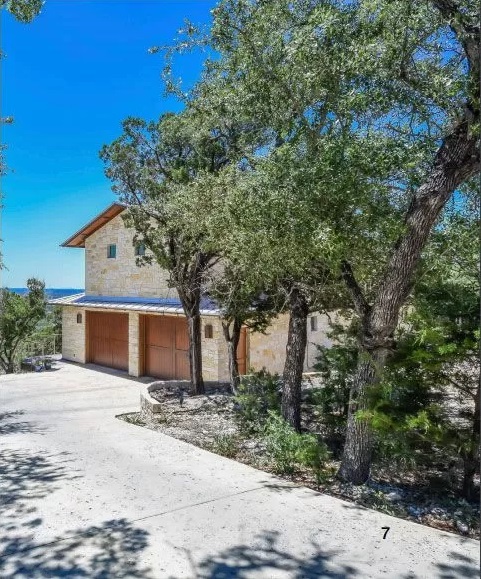
You could do a cut and fill, meaning you hire a contractor with heavy equipment to cut into the slope and create a flat area for your foundation. What would that cost? How long will it take? Are you comfortable with a steep slope or wall in your yard? Will you need a retaining wall? Many cities require an engineered retaining wall if the cut is more than 4’ high. Where will you put the cut material? You should not build your foundation on loose, untested fill. Can you use it to back fill on your property or will you need to have it hauled away? You do not want to pile it on tree roots, as doing so can kill your trees.
- Or could you use the slope to build a walkout basement?
While basements are rare in Central Texas, they can be built. Why don’t we see more basements in this area? Because, when compared to a slab, basements generally cost significantly more money, take twice as long to build, and are more trouble to build. BGCH has assisted several clients in building a basement. Call us for a free consultation if you’re thinking about a basement.
- How far will your new home be from the street?
You will need a driveway to your new home. A driveway is a way to get from the street to your garage without getting stuck. Concrete driveway costs in Central Texas in 2019 start at $50 per linear foot of driveway. Thus, a 400’ driveway can set you back $20,000, but will not add any value to your appraisal. Contact us for construction costs for other types of driveways.
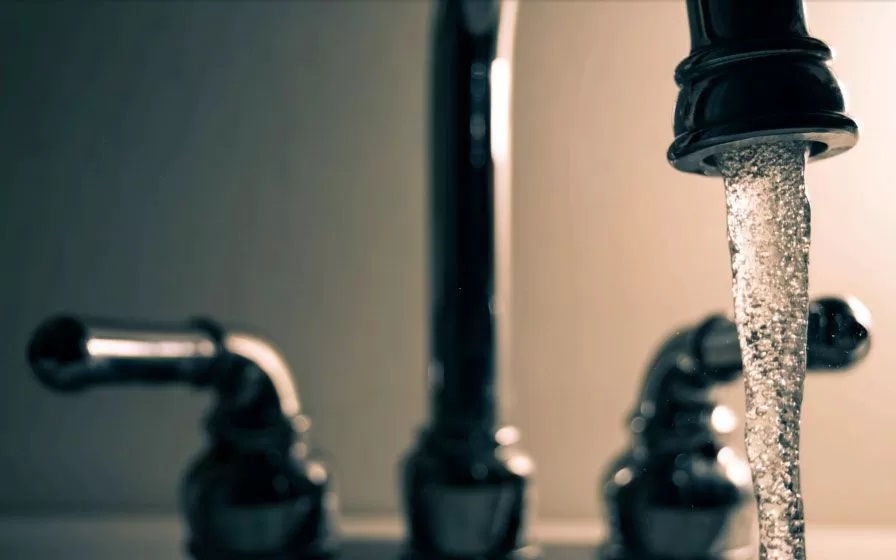
Utilities For A Custom Home
Getting utilities to your new home will definitely affect your budget. So let’s look at specific utility costs.
- Fresh Water
Is public water available? Many people call this “city water” but often it is supplied by a private company, not a municipality. If public water is available, that’s generally the lowest upfront cost for fresh water. What is the cost of hooking up to the public water system? Does the “tap fee” include the physical connection? Usually it does with a privately owned system, but often it does not in major cities. Is there a city “impact fee”? Some municipalities charge a fee for the impact your additional connection will have on their overall system, to collect funds to drill the next well or for new water treatment facilities. Contact the water supplier for your new home site to ascertain costs
What is the distance from the water meter to where you want the water to enter your home? Water line installation is priced by the foot. The
longer the water line, the larger the line needs to be to offset friction loss in the line. If you are building in a rocky area, you will need a rock saw to cut the trench. Trenching through Hill Country rock costs more than in dirt areas.
If public water is not available, can you drill a well? What does that cost? Water wells start at about $12,000. To reach fresh water in a few areas in Central Texas, it is necessary to drill 1000 deep, and then install a large pump to get the water to the surface. Those costs could run as high as $35,000-40,000. It’s easy to find approximate costs. Just call a local water well driller, and ask for an estimate. Most will give you an estimate instantly over the phone.
In lieu of a well, would you consider rain water harvesting? A few BGCH clients in Central Texas have chosen to harvest rain water as their only source of fresh water. A suggestion for storage capacity is 7,500 gallons of rainwater for each occupant of the home. Depending on the size and type of system, 2019 costs are $1-1.50 per gallon of stored water.
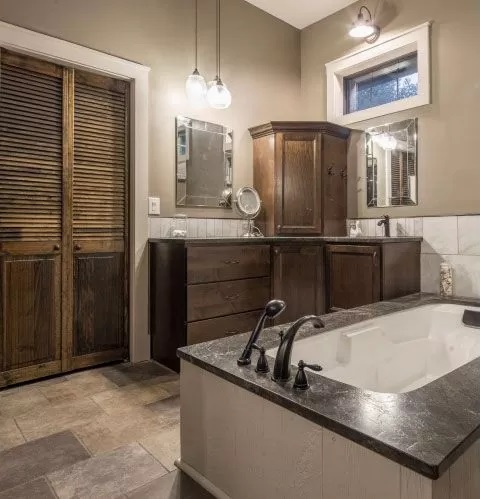
- Sewer
Is public sewer available? If so, that probably is the least expensive way to provide for sanitary sewer for your home. Central sewerage is generally only available in cities, but even in cities some areas may not have sanitary sewer. If the city provides sewer, does the sewer pipe reach all the way to your property? Will you have to install a grinder pump/lift station to get the effluent to the city sewer pipe? What is the cost to connect to the sewer system? What is the cost to run the sewer pipe to your home Contact the city to discover sewer availability, impact fees, if any, and connection charges. Contact BGCH for more information on sewer connection costs on your property.
In many areas, public sewer is not available, so some type of septic system is necessary. Expect this if your property is one acre or larger. Major progress in septic system operation, safety and durability has been achieved in the last 20 years, so you do not have to be afraid of a septic system. Millions of Texans now use septic systems for their homes. The Texas Commission on Environmental Quality, through the individual counties, regulates septic system design, licensing, installation, inspection and operation. In addition, some entities such as the Lower Colorado River Authority (LCRA) regulate septic systems for properties near the lakes
In some places with steep slopes or near lakes, an aerobic drip system is required. This system is designed to prevent any water from surfacing, and running off to creeks or lakes. It is typically $5000-6000 more expensive than the standard aerobic and is installed as a last resort. We have had one situation where the septic designer specified an aerobic drip system, and BGCH was able to discuss the site with the designer and get the designer to change to an aerobic system, saving the client thousands of dollars.
Another factor to consider: do you have enough land on which to install a septic system? A steep slope on your property can limit the spray area, and add difficulty to design and installation. The smallest lot on which we have built a new home with a standard aerobic septic system was 1/3 acre. The house was limited to 2 bedrooms and 1499 sf. Septic system size is determined by the living area and the number of bedrooms (not bathrooms) in your new home. In 2019, septic design and installation costs typically run from $7,000-18,000. The lower cost would be in areas with sandy soil which percolate easily, generally east of I-35 or south of San Antonio. The larger cost would be near Austin, and specifically near lake areas. You can learn more about septic systems on the EPA website.
All types of septic systems will need to be pumped out every few years, to dispose of solids which slowly accumulate over time. Typical recommendations are for tanks to be pumped every 3-5 years, at a cost of $600-1000.
Contact BGCH for guidance on septic considerations for your property. Occasionally
- Gas
Prefer to cook with gas? Many cooks prefer the instant control that cooking with gas brings, but natural gas is only available in larger cities in the Texas Hill Country. As a result, most of our clients who want to cook with gas must install a propane tank at the home site. If you are just using gas for cooking, you may get by with a 120 gallon tank, at a cost of about $1200 for installation and filling. If you want gas for fireplace and water heating, you may want a 250 gallon tank, at an approximate cost of $2500. Concerned about an unsightly tank in your yard? The tank can either be screened with a fence or landscaping, or it can be buried. Burial costs an extra $1000. Some subdivisions require that tanks be hidden by a fence. Others require that tanks be buried. Most home owners in Central Texas with no ready natural gas find that heating with an electric heat pump is less expensive than with propane. Cooks will want to check out the performance of induction cooking. It offers the instant control of gas, without heating up your kitchen in the summer. If you still want gas for cooking, propane is the only option.
that run from Austin to Llano. A septic system must be designed by a licensed sanitarian or licensed professional engineer who specializes in septic systems. The system is installed by a licensed installer and inspected by the county before operation is allowed. The types of septic systems are determined by the soil on your property and the closeness to streams.
Septic systems come in 2 primary types: conventional and aerobic. The conventional (non-aerobic) is the traditional system, generally composed of 2 tanks, and a gravity fed drainage field. The conventional is less expensive to install, and requires less maintenance. There are several variations of the conventional system, such as low pressure dosage, mound, and transpiration bed, but these variations are rarely used. To qualify for a conventional system, you need an area on your property of 200 500 square feet with at least 4’ depth of dirt that will drain water. Most areas of the Texas Hill Country are heavily rock-laden soil, so the conventional system is installed in no more than 20% of our homes. 2019 costs run from $6500-11,000.
The most common major type of septic system is the aerobic. It gets its name from the fact that air is pumped to the bottom of the treatment tank, so that the harmful bacteria in the tank are killed. This system can be installed on most sites in Central Texas, except on slopes with +15% grade and sites with no soil (rock outcrop). The aerobic is a mechanical system, typically with a compressor and pump. This system requires electricity to run, and will need some maintenance. Typical maintenance is filling the 2 gallon chlorine reservoir every 2-3 months and paying a licensed inspector to check the system every 4 months. Annual cost is typically $250-400. The chlorine is used to sanitize the treated water before it is sprayed on your property. Installed prices start at about $2000 more than a conventional system. The system will have 3 tanks, and typically 2-4 sprayer heads that are programmed to spray out the treated water between midnight and 5 am. The spray heads are purple, to show that this is non-potable water. When the septic system is installed in a rocky area, the installer will bring in a backhoe or excavator with a hydraulic hammer to break the rock, so he can excavate a hole to bury the tanks underground.
we will recommend that the very first thing to be done is to hire a licensed septic designer to do a field assessment, to determine if a system can be built for the size of home you want to build. Sometimes you have to invest $ to determine if it’s feasible to build on a specific property.

- Electricity
Is electric power available to your site? What is the distance from the closest power line? If the run is more than about 250’ from the transformer to your home, expect the power company to require that another transformer be installed closer to your home, to minimize voltage drop. If electricity is supplied to your area with power poles, then you probably have the option to add power poles to bring the power closer to your build site. The power supplier may not charge for 1 or 2 poles, but expect charges after that. One co-op in Central Texas charges $2000 per pole to extend power to new sites. Contact the local electric supplier to learn their policies and charges. Generally you can schedule an appointment with a field engineer who can discuss your plans and give you a rough estimate of costs and time line for installation. If there are trees in the area where new poles need to be located, expect to clear at your expense a 15-20’ right of way for the power company equipment.
Do you prefer electric lines to be underground, to avoid unsightly poles? Expect higher expenses. 2019 costs in Central Texas are $15-20 per linear foot. The longer the distance, the larger the wire size, and the larger the cost. If the distance from the ground transformer to your home is more than about 250’, expect to have to set a new ground transformer closer to your home, to minimize voltage drop.
Thinking of going solar and off-grid? This is really, really expensive, and limits your lifestyle. Air conditioning takes a lot of power, and battery systems probably will not be able to supply all that power reliably. While solar panels can definitely generate electricity, the problem is storing that power. As a result, few homes in Central Texas are off-grid. Expect costs of $40-50,000 for a solar/battery system, with the storage batteries being the majority of that cost. In addition, the batteries will need replacement about every 7 years.
- High-Speed Internet
One of the surprises of moving to the country is that high-speed internet service may not be readily available. Phone or cable companies must have a certain density of people in order to build the infrastructure to deliver high speed internet. One client purchased 55 acres of land situated about 50 miles east of Austin, near Thrall, Texas. He owns a business managing online computer systems, with his own servers in his home. High-speed internet service is mandatory for his business. After purchasing the acreage, he discovered that only dial up internet service was available. He had to install a 100’ tower on his property, so he could get line-of-sight high-speed internet. Cost $10,000. Satellite dish service is available in rural areas, but reliability can be an issue.
- Solar Orientation
Last but not least, the solar orientation of the site, and the direction your new home faces, can seriously affect the comfort of your new home, as well as your energy bills. In Texas, our summertime energy bills are twice those of the winter. So in designing the new home, care needs to be taken to improve energy efficiency and comfort. The number one problem of homes in Texas energy-wise is sunlight directly streaming through windows. That does more to heat up the home in the summer than any other single cause. To lessen that problem, it is best to have most windows facing North or South, and minimize the number of windows that face directly East or West. On most properties no larger than an acre or two, the majority of windows are on the front and back of the home. (If you’re building on 100 acres, never mind.) Thus you can block the most intense sun in the summer from reaching your front and back windows by orienting the home so that the front faces either North or South. If your dream property faces East or West, you can mitigate the direct sun by using porches or awnings, but oversize porches can add to your budget. You may think that your trees will block the sun, but most trees in Central Texas are not that tall, so sun blockage is only in the early morning or late evening, not in the heat of the day.
The matters we’ve discussed in this special report can be overwhelming. We’ve raised numerous possible issues that will probably need individual discussion. BGCH is ready to consult with you and assist you in building your new home. The initial consultation is free. We can meet at your land, help determine a good building site, and discuss costs associated with developing the property and building your new home, as well as put you in contact with an experienced lender. Contact us today for assistance.
The bottom line is that you can survive and thrive in building your own energy efficient custom home. Thousands of individuals just like you have built their own homes and saved tens of thousands of dollars. BGCH stands ready to guide and help you all the way through. Failure is not an option. Contact us today.
